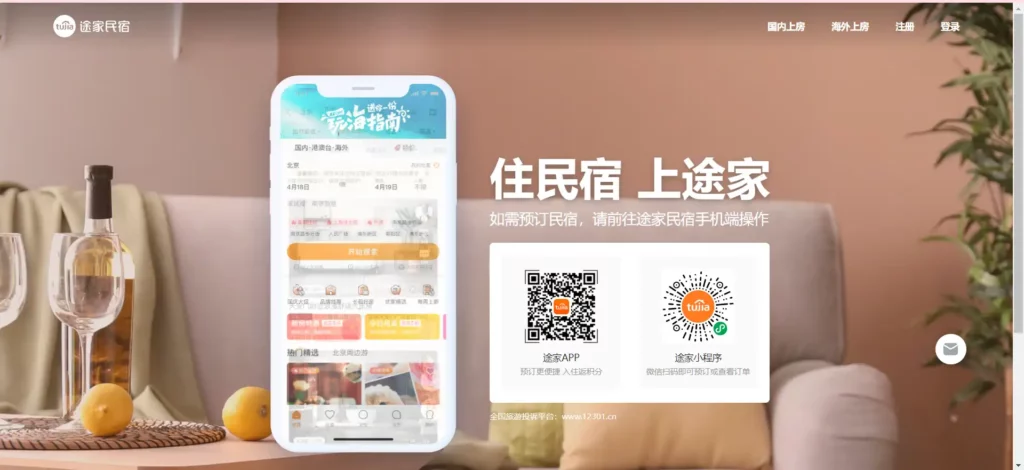Want to attract Chinese travelers? Discover 5 powerful localization strategies—from WeChat marketing to VR storytelling—that help travel and hospitality brands connect with today’s tech-savvy Chinese travelers in 2025.
7 Smart Rules for Using Translation Apps Abroad Without Being Rude – A Polite Traveler’s Guide
7 Smart Rules for Using Translation Apps Abroad Without Being Rude – A Polite Traveler’s Guide
Table of Contents
- Why Should You Watch Out for Outbound Tourism?
- 1 Build your online presence where they are present
- 2 Register your services to Chinese platforms and OTAs
- 3 Localize payment options (accept WeChatPay, Alipay, etc.)
- 4 Use the power of videos
- 5 Emerging technologies like VR elevate your marketing
Why Should You Watch Out for Outbound Tourism?

A young Chinese female tourist happily taking a selfie with her smartphone during a trip, symbolizing the growing trend of outbound tourism from China and reflecting the preferences of modern Chinese travelers.
As of January 2025, China’s outbound tourism is experiencing a significant resurgence. During the eight-day Lunar New Year holiday (January 28–February 4, 2025), approximately 2.2 to 2.6 million Chinese travelers are expected to journey abroad.
With living standards and consumption levels improving, the desire to explore new destinations has grown stronger. This shift creates tremendous opportunities for overseas companies. Even if your business isn’t in China, Chinese travelers are coming to your destination. The question is: what will you do to welcome them?
Improving your translation and localization strategies will help amplify your services. You can run your own marketing campaigns or collaborate with local Chinese counterparts. Here are five tips to get you started:
1 Build your online presence where they are present (e.g., WeChat and Weibo)
WeChat remains the most popular app among Chinese travelers, making it a key platform for businesses looking to engage and convert this valuable audience. To capitalize on its features, research ways to integrate WeChat into your existing channels and align your strategy with its unique ecosystem.
If you own a property or vacation rental, consider working with influencers (Key Opinion Leaders – KOLs). They can showcase your property to their massive follower base, sharing authentic experiences that resonate with potential Chinese travelers.
Collaborating with local suppliers is another effective approach. Promote your services through these partnerships and offer commission-based incentives, creating a win-win scenario.
Learn from Tourism New Zealand’s Success:
Tourism New Zealand partnered with Tencent to target outbound Chinese travelers and ran highly effective ads on WeChat, achieving an impressive 10% click-through rate (CTR). Such partnerships are vital to tapping into WeChat’s billion-plus users, helping brands gain visibility and drive results.
2 Register your services to Chinese platforms and OTAS (and use punchy copywriting)

Popular websites like Google, Facebook, and Instagram are not available in China. If you want to gain more exposure, try other Chinese platforms to sell your services. You can register to Ctrip as your online travel agent for bookings. You may also publish your services with a Chinese landing page.
Use Weibo since this microblogging site is popular among netizens as well. They get information and reviews about a particular place or from their peers.
Tujia is like the Airbnb of China if you’re running a rental vacation. But what’s important is you also use punchy copywriting in Chinese

Depending on your target audience, you need to be careful and smart in your content. Clarity and relevance make sense when you write about your services.
3 Localize payment options (accept WeChatPay, Alipay, etc.)
According to Neilsen, 65% of Chinese tourists use mobile payments during overseas travel. Avoid causing ordeals when it comes to payments. WeChatPay, for example, is one of the popular payment methods among travelers.
It will be a delight for them if your store or even e-commerce site support such seamless payment method. In China, most of the transactions are via a mobile wallet, which WeChat app supports.
Tencent -is open for partnerships for overseas companies and retail stores. You can offer easy payments via QR code scans and solutions.
Line– the messaging app in Japan supports and accept WeChatPay. Tencent is also expanding to North America and even to European countries. WeChat is available in Italy where travelers can pay on retailers that support QR code scans.
4 Use the power of videos
You’ll never know the power of your story in a video until you share it. In this industry, videos and storytelling help you sell the experience. And one of the ways to be effective in this area is to invest in Chinese promotional videos.
You may want to advertise on Douyin. It’s a short video sharing platform where you can create and share snippets to followers. If you have a big budget, you can maximize your English videos and produce voice-overs. The secret is to speak to the hearts of the travelers using the language they understand.
5 Emerging technologies like VR (virtual reality) elevates your marketing
Content, photos, and videos are essential, but they shouldn’t limit you from exploring the opportunities that emerging technologies offer. In Hawaii’s case, Virtual Reality (VR) has played a key role in turning potential travelers’ dreams into reality. The state has successfully leveraged VR technology and social media campaigns on WeChat to enhance its tourism marketing.

One notable example is how Hawaii used VR to showcase its stunning islands, positioning itself as a luxury travel destination. In a separate campaign, the Tourism Board targeted the wedding industry by collaborating with Taiwanese celebrities Ady An Yixuan and Chen Ronglian, who held their luxurious wedding in Oahu in June 2017. This high-profile event was widely covered, including by Jing Daily, further boosting Hawaii’s reputation as an ideal destination for weddings.
Beyond tourism, VR technology is widely used in e-learning and education. However, in digital marketing, it offers a unique value-added experience, allowing potential customers to immerse themselves in a destination before they even arrive.
It’s important to note that localizing such advanced marketing strategies requires significant investment, but the payoff can be substantial. When executed well, VR-driven campaigns enhance brand perception, create deeper engagement, and drive conversions, making it a valuable tool in modern tourism marketing. 🚀
Do you find this thought-leadership piece article helpful? Do you need help in localization strategies in any of these industries? Feel free to contact us or grab this Chinese New Year promo to get you started on your goals this year.
